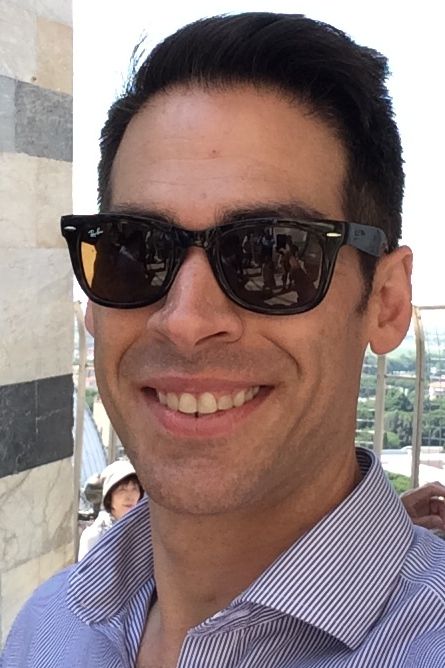Google Books preview here.
“1961 was a significant year in the history of psychiatry because
it spawned a proliferation of critical books by psychiatrists,
sociologists, and philosophers in both the United States and
Europe—launching psychiatry into crisis.” (Pols, p. 16)
Call it a coincidence, but Mad Magazine was right: with the publication of The Myth of Mental Illness, the world turned upside down in 1961. The author of that book, Dr. Thomas Szasz
(1920-2012), was one of the greatest thinkers and prose stylists of the
last 100 years. Has it really been seven years since he died? It has,
and enough time has passed that we can start to take stock of his
legacy.
This important new collection of essays by former colleagues, psychiatrists, philosophers, and legal experts does just that.
I should make two disclosures before proceeding. First, the editors
of this new book were colleagues of Szasz’s at SUNY Upstate Medical
Center in Syracuse, New York, and they have hosted me in their speaker
series several times. Second, theirs is the second book to examine
Szasz’s legacy, and I contributed an essay to the first.
Of course, the editors make important disclosures of their own.
First, as Dr. James Knoll remarks, psychiatry is “a hybrid profession of
clinical science and humanities” (104). Second, as Dr. Haldipur states,
“Szasz’s own writings are best read as philosophy rather than as
psychiatry. . . . His true métier was that of a philosopher
rather than of a psychiatrist” (278). This explains why I, a professor
of Classics—a branch of the humanities, including philosophy—venture to
review a book dedicated to an appraisal of Szasz’s legacy.
What is that legacy? In a 1998 manifesto, Szasz himself put it the following way:
- Mental illness is a metaphor (metaphorical disease).
- Psychiatry and the State ought to be separated by a “wall.”
- We ought to presume that psychiatric “defendants” are mentally competent.
- Involuntary mental hospitalization is imprisonment under the guise of treatment.
- The opinions of experts about the “mental state” of defendants ought to be inadmissible in court.
- We seek to replace involuntary psychiatry (psychiatric slavery) with contractual relations between care givers and clients.
Szasz undergirded these six contentions with an enormous apparatus of
books, articles, and media appearances. How do they hold up under
scrutiny?
Readers familiar with The Myth of Mental Illness will
recognize the first point as his main contention there (it is accurately
summarized by Church’s essay here). And on the evidence of this book, I
can only conclude it emerges brighter and more solid than before. The
authors all concede the point either implicitly or explicitly. For
example, in 1994 Dr. Allen Frances
led the group that revised the DSM, the official book of psychiatric
diagnoses. In 2019, however, Dr. Frances writes (171): “I agree
completely with Szasz that mental disorders are not diseases and that
treating them as such can sometimes have noxious legal consequences.”
And although they will disagree, other authors implicitly concede the
point by simply contesting the definition of disease or health
(Wilson, Pies, Torrey). But since Szasz had always defined those words
in biological terms, contesting his premise simply changes the debate
rather than resolves it.
The second five points all relate to Szasz’s policy ideas. Most
chapters in this book engage with them in one form or another, and
several are devoted to them exclusively:
- What should we do to or for someone contemplating suicide? (Knoll)
- What are the best practices for therapists in clinical settings? (Dewan and Kaplan)
- Should we keep the insanity defense? (Pickering)
- How should psychiatric research funding be prioritized and directed? (Gupta)
Suffice it to say that most authors shrink from Szasz’s commitment to
libertarianism and the utopian schemes that cold creed tends to dream
up.
Other essays provide absorbing context to the development of Szasz’s
thought or rhetorical strategies (Pols, v.d. Luft, Radden), or they
extend Szasz’s legacy by looking at “psychopathy” (which, to my
surprise, is not considered a mental illness) (Ciaccio). Still others,
such as Sadler, examine the relationship between mental illnesses and
value judgments; and since, in my view, Szasz’s greatest books—The Theology of Medicine, The Manufacture of Madness, and Coercion as Cure—hew closely to this theme, I would have liked to see more along these lines.
The six points Szasz himself enumerated, however, are not the only
points the editors consider part of Szasz’s legacy. As Haldipur
emphasizes in an important epilogue, Szasz’s writings did play some role
in deinstitutionalization, and Szasz himself succumbed to the unethical
temptation of retroactive diagnosis on at least one occasion (viz. in
his 2006 book on Virginia Woolf).
Surely the most maddening aspect of Szasz’s legacy, however, was his
decision to partner with Scientology to achieve his policy ambitions.
That decision continues to confuse many people, but aside from one nod
to it by Haldipur and another by Torrey, no one chose to kick that
hornet’s nest. Someone should. As Torrey notes, “Szasz’s association
with Scientology has probably done more to undermine his reputation, and
thus lose the benefit of his many useful ideas, than any other factor”
(101). I agree.
Silver tarnishes in your china cabinet, whereas scouring and buffing
restores its gleam. The editors’ decision to take that approach in this
collection—tough love, not unconditional love—makes Thomas Szasz: an appraisal of his legacy an important assessment of his thought. It deserves to be read, discussed, and debated widely.



Nessun commento:
Posta un commento